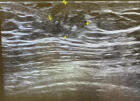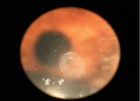Abstract
Research Article
Scrotal Hydroceles not associated with Patent Processus Vaginalis in Children
Masao Endo*, Fumiko Yoshida, Masaharu Mori, Miwako Nakano, Toshiya Morimura, Yasuharu Ohno and Makoto Komura
Published: 02 May, 2018 | Volume 2 - Issue 1 | Pages: 005-012
Background: After the closure of patent processus vaginalis (PPV) in boys with indirect inguinal hernia (IIH) or hydrocele, large scrotal hydroceles can occur on rare occasions despite the complete occlusion of internal inguinal ring (IIR). We present some cases that may help to explain the cause of this rare occurrence.
Materials: During last 14 years, six boys exhibited non-communicating large scrotal hydroceles (2 right, 1 left, 3 bilateral) among 352 children who underwent laparoscopic repair for hydroceles. Ages ranged from 7 months to 15 years with a median of 12 years. Five of them had a history of repair for hydrocele or IIH prior to the definitive surgery and one boy underwent an initial operation.
Results: In all the patients, laparoscopic inspection at the definitive surgery revealed completely closed IIRs. One infant with primary hydroceles was found to have large hydroceles bulging into the peritoneal cavity. All the patients were treated with subtotal removal of the sac without any recurrence. Marked thickness of the sack walls with abundant lymph vessels was characteristic histopathological findings.
Conclusions: The complete occlusion of the PPV does not always prevent the recurrence of hydrocele through alternative pathogenesis. The pathological findings of resected specimens suggested a disturbance in lymph flow in the testicular system. The subtotal removal of the sac is the treatment of choice. Diagnostic laparoscopy prior to a direct cut-down approach to the neck of the seminal cord is advisable to identify non-communicating hydroceles to avoid further impairment of lymph drainage around the IIR.
Read Full Article HTML DOI: 10.29328/journal.ascr.1001015 Cite this Article Read Full Article PDF
References
- Koop CE. Groin hernia in infants and children. In: Nyhus LM, Condon RE (eds). Hernia, 4th edn. Philadelphia: JB Lippincott. 1995; 109-110.
- Endo M, Watanabe T, Nakano M, Yoshida F, Ukiyama E. Laparoscopic completely extraperitoneal repair of inguinal hernia in children: a single-institute experience with 1,275 repairs compared with cut-down herniorrhaphy. Surg Endosc. 2009; 23: 1706-1712. Ref.: https://goo.gl/2u9SVn
- Endo M, Nakano M, Watanabe T, Ohno M, Yoshida F, et al. Laparoscopy assisted one-stage trans-scrotal orchidopexy applicable to all types of maldescended testes. In: Shamsa A (ed.). Advanced Laparoscopy. Rijeka: InTech. 2011; 55-66. Ref.: https://goo.gl/Ly8Hzy
- Ein SH, Nasr A, Wales P, Gerstle T. The very large recurrent postoperative scrotal hydrocele after pediatric inguinal hernia repair: a rare problem. Pediatr Surg Int. 2009; 25: 239-241. Ref.: https://goo.gl/WFPjTb
- Climador M, Castagnetti M, DeGrazia E. Management of hydrocele in adolescent patients. Nat Rev Urol. 2010; 7: 379-385. Ref.: https://goo.gl/7yCmxR
- Ku JH, Kim ME, Lee NK, Park YH. The excisional, plication and internal drainage techniques: a comparison of the results for idiopathic hydrocele. BJU Int. 2001; 87: 82-84. Ref.: https://goo.gl/RruAKf
- Wilson JM, Aaronson DS, Schrader S, Baskin LS. Hydrocele in the pediatric patient: Inguinal or scrotal approach?. J Urol. 2008; 180: 1724-1728. Ref.: https://goo.gl/T5MoUn
- Wallace AF. Aetiology of the idiopathic hydrocele. Br J Urol. 1960; 32: 79-96. Ref.: https://goo.gl/ZDPXzP
- McBrien MP, Edwards JM, Kinmonth JB. Lymphography of the testis and its adnexa in the normal and in idiopathic hydrocele. Arch Surg. 1972; 104: 820-825. Ref.: https://goo.gl/8Wo5Sc
- Oswald J, Brenner A, Brenner E, Fritsch H, Schlenk B. Pattern of lymphatic drainage of human testes with respect to hydrocele formation after varicocelectomy in adolescents. J Pediatr Urol. 2009; S81. Ref.: https://goo.gl/bvrN3d
- Fourie N, Banieghbal B. Pediatric Hydrocele: A complihensive review. Clin Surg. 2017; 2: 1448. Ref.: https://goo.gl/vYX1g1
- Onol SY, Llbey YO, Onol FF, Ozbek E, Arslan B, et al. A novel pull-through technique for the surgical management of idiopathic hydrocele. J Urol. 2009; 181: 1201-1205. Ref.: https://goo.gl/DkWkvg
- Nigam VK. Window operation: new technique for hydrocele. Urology. 1984; 24: 481-482. Ref.: https://goo.gl/6NLPah
- Aslan M, Kilinc M, Yilmaz K, Ozturk A. A new approach in the management of the hydrocele with a silicone catheter. Urology. 2004; 63: 170-173. Ref.: https://goo.gl/osknVY
- Hu KN, Khan AS, Gonder M. Sclerotherapy with tetracycline solution for hydrocele. Urology. 1984; 24: 572-576. Ref.: https://goo.gl/QY8x4f
- Ozdilek S. The pathogenesis of idiopathic hydrocele and a simple operative technique. J Urol. 1957; 77: 282-284. Ref.: https://goo.gl/85uvE5
- Endo M, Ohno M, Yoshida F, Nakano M, Watanabe T, et al. Laparoscopic hernia repair and its validation by second-look inspection to internal inguinal rings in children with patent processus vaginalis. In: Meinhold-Heerlein I (ed.). Laparoscopy - An Interdisciplinary approach. Rijeka: In Tech. 2011; 133-146. Ref.: https://goo.gl/ce6Guw
Figures:
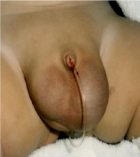
Figure 1

Figure 2
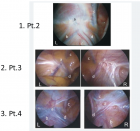
Figure 3
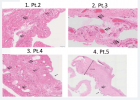
Figure 4
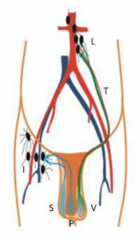
Figure 5
Similar Articles
-
Laparoscopic Adrenalectomy; A Short Summary with Review of LiteratureMushtaq Chalkoo*,Naseer Awan,Hilal Makhdoomi,Syed Shakeeb Arsalan ,Waseem Raja. Laparoscopic Adrenalectomy; A Short Summary with Review of Literature . . 2017 doi: 10.29328/journal.ascr.1001001; 1: 001-011
-
Bouveret Syndrome in an Elderly FemaleZvi H. Perry*, Udit Gibor,Shahar Atias,Solly Mizrahi,Alex Rosental, Boris Kirshtein. Bouveret Syndrome in an Elderly Female . . 2017 doi: 10.29328/journal.ascr.1001002; 1: 012-015
-
Intestinal obstruction complicated by large Morgagni herniaMartín Arnau B*,Medrano Caviedes R,Rofin Serra S, Caballero Mestres F,Trias Folch M. Intestinal obstruction complicated by large Morgagni hernia . . 2017 doi: 10.29328/journal.ascr.1001003; 1: 016-020
-
Clinical significance of Urinary Amylase in Acute PancreatitisMumtaz Din Wani,Mushtaq Chalkoo*,Zaheer Ahmed,Awhad Mueed Yousuf,Yassar Arafat,Syed Shakeeb Arsalan,Jaffar Hussain. Clinical significance of Urinary Amylase in Acute Pancreatitis . . 2017 doi: 10.29328/journal.ascr.1001004; 1: 021-031
-
Use of Orthodeoxia by pulse Oximetry in the detection of Hepatopulmonary SyndromeCesar Raul Aguilar Garcia*,Guadalupe Viridiana Ontiveros Guerra. Use of Orthodeoxia by pulse Oximetry in the detection of Hepatopulmonary Syndrome . . 2017 doi: 10.29328/journal.ascr.1001005; 1: 038-041
-
Surgery and new Pharmacological strategy in some atherosclerotic chronic and acute conditionsLuisetto M*,Nili-Ahmadabadi B,Ghulam Rasool Mashori. Surgery and new Pharmacological strategy in some atherosclerotic chronic and acute conditions . . 2017 doi: 10.29328/journal.ascr.1001006; 1: 042-048
-
The revolution of cardiac surgery evolution Running head: Cardiac surgery evolutionMarzia Cottini*. The revolution of cardiac surgery evolution Running head: Cardiac surgery evolution . . 2017 doi: 10.29328/journal.ascr.1001007; 1: 049-050
-
Dieulafoy’s Lesion related massive Intraoperative Gastrointestinal Bleeding during single Anastomosis Gastric Bypass necessitating total Gastrectomy: A Case ReportAshraf Imam,Khalayleh Harbi*,Miller Rafael, Khoury Deeb,Buyeviz Victor,Guy Pines,Sapojnikov Shimon. Dieulafoy’s Lesion related massive Intraoperative Gastrointestinal Bleeding during single Anastomosis Gastric Bypass necessitating total Gastrectomy: A Case Report . . 2017 doi: 10.29328/journal.ascr.1001008; 1: 051-055
-
Laparoscopic partial nephrectomy-does tumor profile influence the operative performance?Krishanu Das*, George P Abraham, Kishnamohan Ramaswai, Datson George P,Jisha J Abraham,Thomas Thachill, Oppukeril S Thampan. Laparoscopic partial nephrectomy-does tumor profile influence the operative performance? . . 2017 doi: 10.29328/journal.ascr.1001009; 1: 056-060
-
Comments for the Nuremberg Code 70 Years LaterJie Zhang,Chao-Jun Kong, Zhong Jia*. Comments for the Nuremberg Code 70 Years Later . . 2017 doi: 10.29328/journal.ascr.1001010; 1: 061-061
Recently Viewed
-
The Accuracy of pHH3 in Meningioma Grading: A Single Institution StudyMansouri Nada1, Yaiche Rahma*, Takout Khouloud, Gargouri Faten, Tlili Karima, Rachdi Mohamed Amine, Ammar Hichem, Yedeas Dahmani, Radhouane Khaled, Chkili Ridha, Msakni Issam, Laabidi Besma. The Accuracy of pHH3 in Meningioma Grading: A Single Institution Study. Arch Pathol Clin Res. 2024: doi: 10.29328/journal.apcr.1001041; 8: 006-011
-
Assessment of Perceptions of Nursing Undergraduates towards Mental Health PracticesAlya Algamdii*. Assessment of Perceptions of Nursing Undergraduates towards Mental Health Practices. Clin J Nurs Care Pract. 2025: doi: 10.29328/journal.cjncp.1001059; 9: 007-011
-
Multipurpose Antioxidants based on Food Industry Waste: Production and Properties EvaluationToshkhodjaev*. Multipurpose Antioxidants based on Food Industry Waste: Production and Properties Evaluation. Arch Food Nutr Sci. 2025: doi: 10.29328/journal.afns.1001062; 9: 001-003
-
Relationship between Fertility Diet Score Index Items and Ovulation in Women with Polycystic Ovary Syndrome: A Narrative ReviewHadis Alimoradi,Faezeh Mashhadi,Ava Hemmat,Mohsen Nematy,Maryam Khosravi,Maryam Emadzadeh,Nayere Khadem Ghaebi,Fatemeh Roudi*. Relationship between Fertility Diet Score Index Items and Ovulation in Women with Polycystic Ovary Syndrome: A Narrative Review. Arch Food Nutr Sci. 2024: doi: 10.29328/journal.afns.1001061; 8: 041-048
-
Evaluation of the LumiraDx SARS-CoV-2 antigen assay for large-scale population testing in SenegalMoustapha Mbow*,Ibrahima Diallo,Mamadou Diouf,Marouba Cissé#,Moctar Gningue#,Aminata Mboup,Nafissatou Leye,Gora Lo,Yacine Amet Dia,Abdou Padane,Djibril Wade,Josephine Khady Badiane,Oumar Diop,Aminata Dia,Ambroise Ahouidi,Doudou George Massar Niang,Babacar Mbengue,Maguette Dème Sylla Niang,Papa Alassane Diaw,Tandakha Ndiaye Dieye,Badara Cisé,El Hadj Mamadou Mbaye,Alioune Dieye,Souleymane Mboup. Evaluation of the LumiraDx SARS-CoV-2 antigen assay for large-scale population testing in Senegal. Int J Clin Virol. 2022: doi: 10.29328/journal.ijcv.1001041; 6: 001-006
Most Viewed
-
Feasibility study of magnetic sensing for detecting single-neuron action potentialsDenis Tonini,Kai Wu,Renata Saha,Jian-Ping Wang*. Feasibility study of magnetic sensing for detecting single-neuron action potentials. Ann Biomed Sci Eng. 2022 doi: 10.29328/journal.abse.1001018; 6: 019-029
-
Evaluation of In vitro and Ex vivo Models for Studying the Effectiveness of Vaginal Drug Systems in Controlling Microbe Infections: A Systematic ReviewMohammad Hossein Karami*, Majid Abdouss*, Mandana Karami. Evaluation of In vitro and Ex vivo Models for Studying the Effectiveness of Vaginal Drug Systems in Controlling Microbe Infections: A Systematic Review. Clin J Obstet Gynecol. 2023 doi: 10.29328/journal.cjog.1001151; 6: 201-215
-
Prospective Coronavirus Liver Effects: Available KnowledgeAvishek Mandal*. Prospective Coronavirus Liver Effects: Available Knowledge. Ann Clin Gastroenterol Hepatol. 2023 doi: 10.29328/journal.acgh.1001039; 7: 001-010
-
Causal Link between Human Blood Metabolites and Asthma: An Investigation Using Mendelian RandomizationYong-Qing Zhu, Xiao-Yan Meng, Jing-Hua Yang*. Causal Link between Human Blood Metabolites and Asthma: An Investigation Using Mendelian Randomization. Arch Asthma Allergy Immunol. 2023 doi: 10.29328/journal.aaai.1001032; 7: 012-022
-
An algorithm to safely manage oral food challenge in an office-based setting for children with multiple food allergiesNathalie Cottel,Aïcha Dieme,Véronique Orcel,Yannick Chantran,Mélisande Bourgoin-Heck,Jocelyne Just. An algorithm to safely manage oral food challenge in an office-based setting for children with multiple food allergies. Arch Asthma Allergy Immunol. 2021 doi: 10.29328/journal.aaai.1001027; 5: 030-037

HSPI: We're glad you're here. Please click "create a new Query" if you are a new visitor to our website and need further information from us.
If you are already a member of our network and need to keep track of any developments regarding a question you have already submitted, click "take me to my Query."







